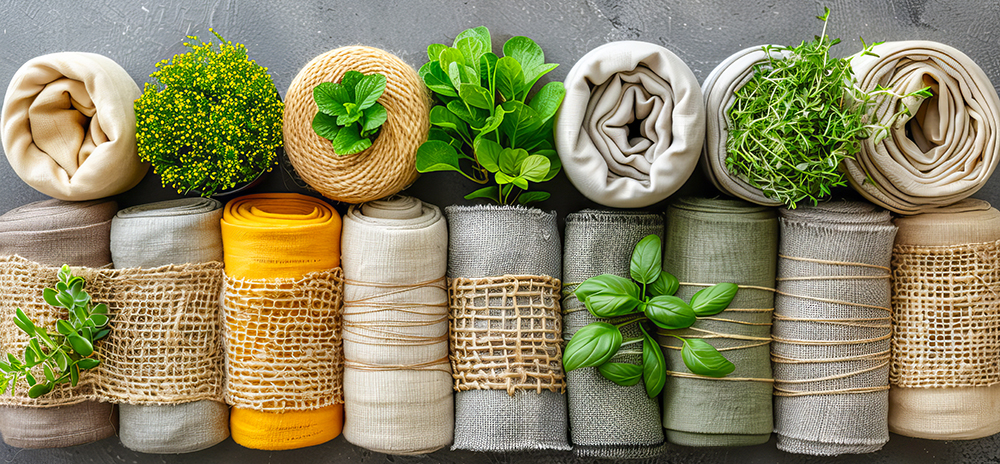Understanding Sustainable Fabrics18 September 2024 | Admin
Sewing with stretch fabrics can be challenging, but you can achieve excellent results with the proper techniques and tools. Here are some detailed tips to help you sew with stretch fabrics successfully. PreparationChoose the Right Fabric: Select fabrics with the appropriate amount of stretch for your project. Common stretch fabrics include jersey, spandex, and lycra. Pre-Wash Fabric: Wash and dry your fabric before cutting to prevent shrinkage later. After washing, this step ensures that your finished garment maintains its size and shape. Use the Right Needles: Use a ballpoint or stretch needle in your sewing machine. These needles have rounded tips that prevent snagging or breaking the fabric fibres. This is crucial for maintaining the integrity of your fabric. Use the Right Thread: Polyester or nylon thread works best as it has some give and wonít snap as easily as cotton thread. This ensures durability and flexibility in your seams. Use Stretch Stitches: If your machine has stretch stitches (like a lightning bolt stitch), use them. Otherwise, a narrow zigzag stitch works well. Stretch stitches allow the fabric to move without breaking the seam. CuttingUse Sharp Scissors or Rotary Cutter: Ensure your scissors are sharp, or use a rotary cutter for clean edges. Sharp tools prevent jagged edges and make cutting more accurate. Avoid Stretching the Fabric: Lay the fabric flat and avoid stretching it while cutting. Stretching can distort the fabric, leading to inaccurate cuts and ill-fitting pieces. Pin Carefully: Use plenty of pins or fabric weights to hold the fabric in place while you cut. This helps maintain the fabricís shape and ensures precise cutting. SewingUse a Walking Foot: A walking foot helps feed the fabric evenly through the machine, reducing stretching and distortion. This is especially useful for thick or slippery fabrics. Stabilise Seams: For seams that need extra stability (like shoulder seams), use a strip of interfacing or clear elastic. This prevents the seams from stretching out of shape. Adjust Tension and Pressure: Test your stitch on a scrap piece of fabric and adjust the thread tension and presser foot pressure if needed. Proper settings ensure smooth stitching and prevent puckering. Avoid Pulling Fabric: Let the feed dogs move the fabric through the machine. Pulling can stretch and distort the fabric, leading to uneven seams. Finish Edges: Use a serger for a professional finish or a zigzag stitch to prevent fraying. Proper edge finishing enhances the durability and appearance of your garment. HemmingUse a Twin Needle: A twin needle can create a professional-looking hem with some stretch. This technique is ideal for hems on knit fabrics, giving a clean, finished look. Stabilise Hems: Use fusible hem tape or a strip of interfacing to prevent hems from stretching out of shape. This keeps your hems neat and even. Test Hem Stretch: Make sure the hem retains its stretch by gently pulling the fabric to ensure the stitch doesnít pop. This is essential for maintaining the flexibility of stretch fabrics. Additional TipsPress with Care: Use a steam iron and press (donít iron) the seams to avoid stretching the fabric. Pressing helps set the stitches without distorting the fabric. Practice on Scraps: Test your stitches on scrap pieces of fabric to perfect your technique before working on your actual project. Practising helps you get a feel for how the fabric behaves. Hand Basting: For tricky areas, hand-basting can help keep things in place before machine stitching. This is particularly useful for curves and intricate details. By following these tips and taking time, you can achieve professional-looking results when sewing with stretch fabrics. Happy sewing! |
|



